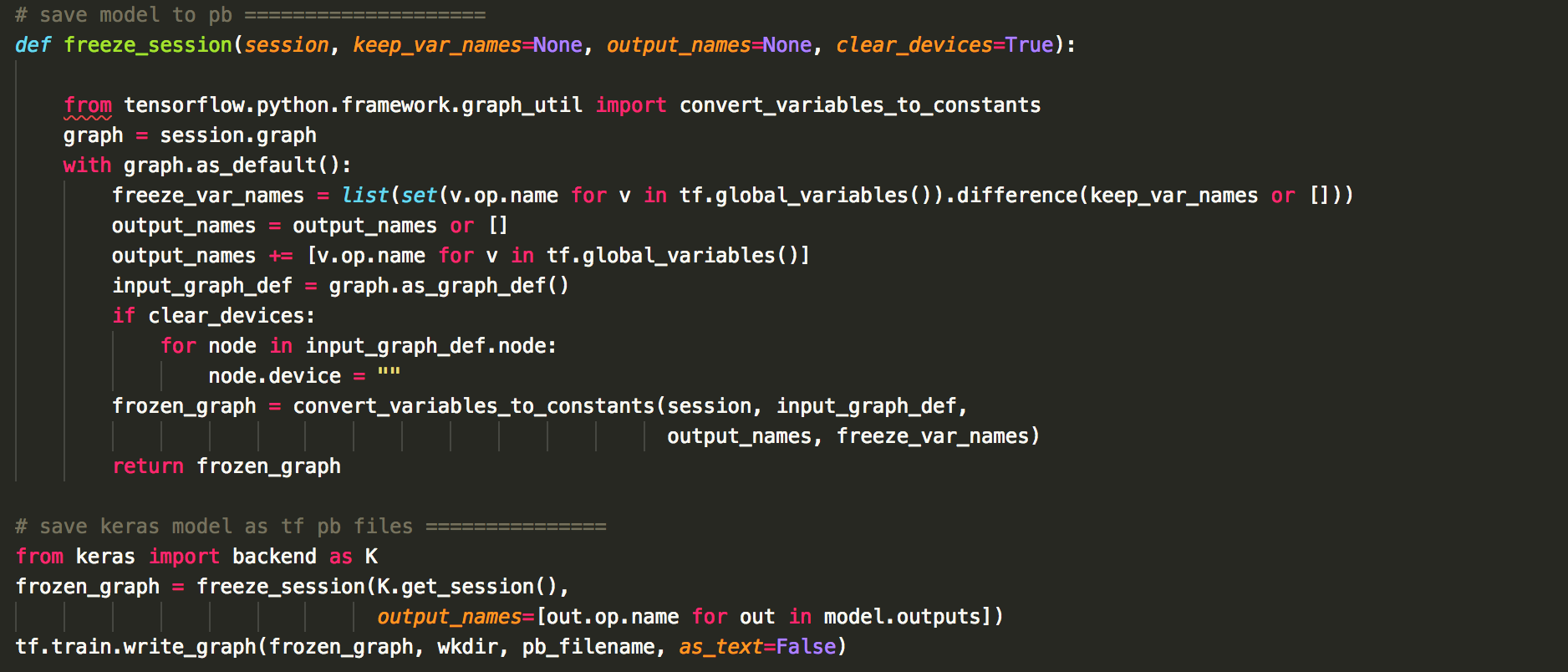Tensorflow is a low-level deep learning package which requires users to deal with many complicated elements to construct a successful model. However, tensorflow is also powerful for production that's why most companies choose tensorflow as their major platforms. On the other hand, Keras provides a user-friendly API to help users quickly build complicated deep learning models but it is not appropriate for making products.
Question:
Can we build our models in Keras and output it to tensorflow compatiable format (Protocol Buffers .pb file) for prediction?
In this tutorial, I will show to how to make it step-by-step.
- Note: .ckpt format can also persist your model, but it is for you to restore the model in tensorflow. As for .pb file, it is an universal format for you to perform prediction using various devices.
Okay, let's begin with a simple Keras model. Consider we have 10 random numbers. They are either all positive or all negative and we label the data based on their sign (1 for positive, 0 for negative). Then we build a neural network with only two layers and finally output the probability using a sigmoid function. Pretty simple, right? If you run the code, you will find the accuracy goes to 100% with just 1 epoch.
Tensorflow uses Protocol Buffers format to save the model (.pb file). In gereral, Keras has no way to save its model to .pb format. However, we can make it using another approach. If you check Keras's user manual, there is a function in its backend called get_session() (available only if you use tensorflow backend). This function will return a tensorflow session. Therefore, we can consider it as a pure tensorflow problem. A simple but useful function to do the trick can be found here. (In this tutorial, I keep the code unchanged. You should take a while to understand the code, but we can simply use it at this moment.).
Okay, now you should have successfully generated a .pb file. The next question is how to let tensorflow load and use the model?
To use a .pb file, you need to use gfile.FastGFile() method. Remember that our .pb file is binary, so set the mode to 'rb' is necessary. Then create a tf.GraphDef() object and use the method ParseFromString() to parse the graph from the .pb file. Finally import this graph using import_graph_def() to the current tensorflow session as shown below.
okay, now we've succesffuly reconstructed a tensorflow model. Let's try to visuallize the model by tensorboard:
You can find the graph is by default called "import". If you don't like this default, you can add a paramater 'name' when importing the graph, e.g. tf.import_graph_def(graph_def, name='my_model').
As you can find in the tensorboard, there are many objects in the graph with their unique names such as dense_1, dense_2, etc. You can try to output all of them (including sub-objects) by sess.graph.get_operations(). The names are important because we will use them to call their interface to tensorflow (note: the sigmoid layer is hidden in the dense3 in the tensorboard graph. Just click dense_3 to find it.)
Remember that, all the layer names should end with ":0" (or something else based on your graph). It means you want to fetch the interface to first input/output tensor of the layer. This is required because a layer may sometimes have more than one input/output tensors.
If everything goes well, you should be able to see the predicted results now.
A full example can be found here. Enjoy it!






